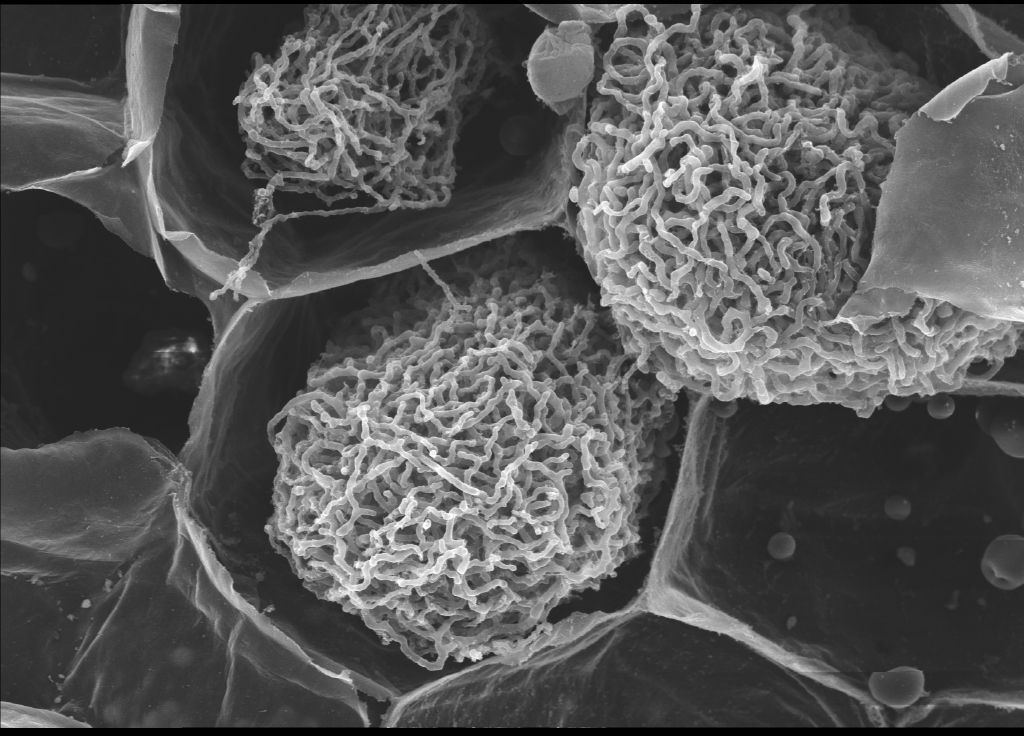A Mystery of Hiding Orchids, Solved
Smithsonian scientists have discovered what triggers the rare small-whorled pogonia to awaken from dormancy
/https://tf-cmsv2-smithsonianmag-media.s3.amazonaws.com/filer/ff/bb/ffbbc088-f818-40b2-b299-053bd23587ce/smallwhorledpogonia_creditmelissamccormick-wr.jpg)
Orchids can hide. Members of this diverse family of plants, known for their wildly attractive flowers, have long been recognized for their ability to enter extended periods of dormancy—sometimes for a year or longer. The plants take refuge underground, and with no leaves and no need for photosynthesis, the orchids rely on fungi for the nutrients they need to survive.
Scientists have long puzzled over what prompts the plants to switch from a state of dormancy and send up shoots. Now, a new study by a group of scientists from the Smithsonian Environmental Research Center in Edgewater, Maryland, explains how concentrations of certain fungus in the soil cause one North American species of orchid, the small-whorled pogonia, to awaken.
“This is an extremely rare orchid and as rare as it is, it's not as rare as we thought because it spends a lot of time hiding out underground,” says Smithsonian ecologist Melissa McCormick, one of the authors of the paper. “We had done some previous research into orchid mycorrhizal fungi. . . we were interested in whether the abundance of fungi in the soil was affecting not just where they are, but also when they emerge.”
The fungi turned out to be the key. Most orchids form symbiotic partnerships with particular species of fungi in order to survive. Orchid seeds lack the starchy endosperm that helps to feed the new sprouts of many other types of plants. Instead, the seeds depend on mycorrhizal fungus in the soil. They only send a shoot up when it is time to flower and reproduce. The small-whorled pogonia has this relationship with a mycorrhizal fungus in the Russulaceae family.
/https://tf-cmsv2-smithsonianmag-media.s3.amazonaws.com/filer/16/c5/16c5d99b-ea59-4866-a5c3-33d2b4abfaa9/melissawithorchidsweb.jpg)
McCormick analyzed the DNA of soil samples collected immediately adjacent to wild small-whorled pogonias, and used that data to calculate how much Russulaceae hyphae was present in the soil at each site.
When McCormick and the four other scientists involved with the research compared the abundance of Russulaceae in the soil with the frequency that the dormant pogonias awoke and sent up shoots, they found a clear relationship: Greater populations of the fungus meant that the rare pogonias were more likely to emerge. In other words, more of the right fungus in the soil helps the orchid to come out of dormancy more often.
In the past, without the ability to analyze the DNA of a sample, it wasn't practical to calculate exactly how much of any one fungus was present. Even under a microscope, a lot of fungi look very similar. “In a sample of soil the size of a lima bean you have probably several hundred species of fungus,” McCormick says.
“This fungal aspect of all this work has been known since Darwin's time,” says Dennis Whigham, senior botanist at the Smithsonian Environmental Research Center and a co-author of the study. “But only in recent years have we been able to really go after it and look at the DNA of the fungi to see what they are.”

Some of the showiest orchids from tropical regions have lent the impression that orchids are an exotic, tropical group of plants. But orchids are actually very widespread, even in the United States. “We have over 200 species and they occur in every state,” Whigham says. “About 60 percent of them are in trouble somewhere that they occur.”
The decline of many populations of American orchids prompted Whigham and others to help create the North American Orchid Conservation Center, based out of the Smithsonian Environmental Research Center. The center works with around 50 collaborators to preserve habitats and to bank seeds and samples of mycorrhizal fungi, and conduct studies like this one.
What does the fungus get out of this relationship with the orchid? Probably not much.
“All terrestrial plants on Earth have interactions with fungi,” Whigham says. Those partnerships are called 'mutualistic.' But almost all of the evidence indicates that in a fungi-orchid relationship, the orchid is a very needy partner.
/https://tf-cmsv2-smithsonianmag-media.s3.amazonaws.com/accounts/headshot/JacksonLanders.jpg)
/https://tf-cmsv2-smithsonianmag-media.s3.amazonaws.com/accounts/headshot/JacksonLanders.jpg)